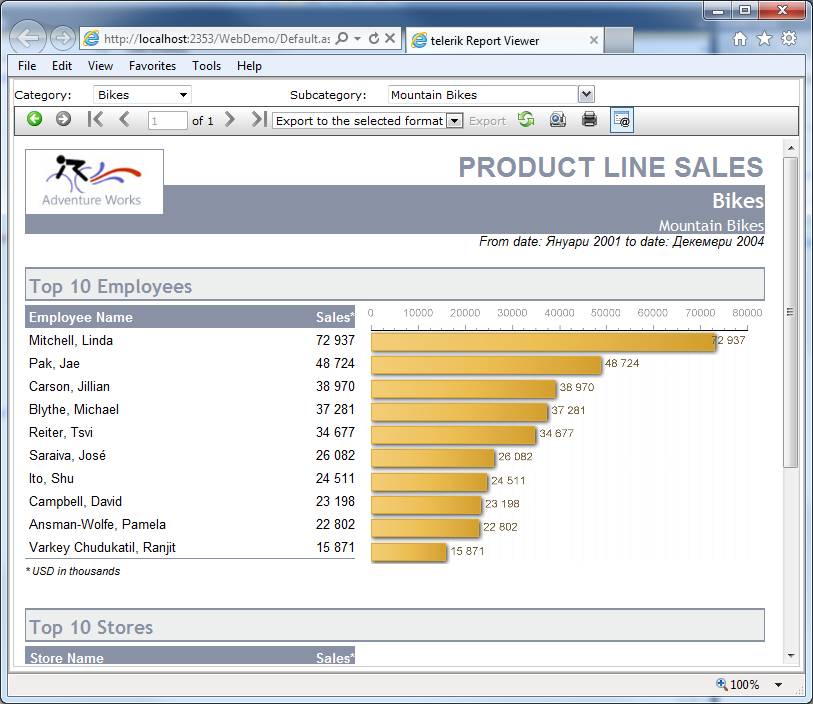ASP.NET Web Forms Report Viewer Overview
This document provides a brief overview of the legacy ASP.NET WebForms Report Viewer.
Starting with the 2024 Q4 release, the ASP.NET WebForms Report Viewer will no longer be distributed with Telerik Reporting. We strongly recommend using its successor - the HTML5 Web Forms Report Viewer, which includes the latest features, performance enhancements, and security improvements offered by both Microsoft and Telerik.
Purpose and Features
The ASP.NET ReportViewer is designed to render Telerik Reports within ASP.NET WebForms projects.

The ASP.NET Report Viewer uses
ASP.NET SessionandASP.NET Cacheto preserve the report instance assigned to itsReportproperty during page postbacks and for some design reasons as well, soSessionmust be enabled at all times.
The ASP.NET Report Viewer has the following useful features:
- Navigate back in history
- Navigate forward in history
- Go to the first page
- Go to the previous page
- Go to a specific page
- Total number of pages
- Go to the next page
- Go to the last page
- Export: see Export Formats for available export formats.
- Refresh
- Print Preview: switches between Logical and Physical page renderer. See Rendering and Paging for more info.
- Print: see True Print for more info.
- Show/Hide parameters area
- Show/Hide document map
How it works
The ASP.NET ReportViewer control is a composite of standard ASP.NET Web Server controls.
The ASP.NET ReportViewer comes with four predefined skins:
Default,WebBlue,Original, andOffice2007. The ASP.NET ReportViewer control's toolbar is immutable. To build custom UI for the toolbar and work with the rendered report in the viewer, you can use the ASP.NET ReportViewer Client-Side API.
The purpose of the ASP.NET ReportViewer control is to display Telerik Reports and allow the user to interact with them. Reports are processed and rendered on the server. Reports and their content are delivered to the client through the Telerik.ReportViewer.axd handler.
The ASP.NET ReportViewer caches the report data in the session storage when the session state mode is InProc. For that reason, when the data is provided in the NeedDataSource event handler of the report, the event will be raised only the first time the report gets rendered. When the report is requested for the second time, for example for Export or Print from the viewer, the event won't be raised as the report already has data.
The ASP.NET ReportViewer control's content is rendered in IFRAME elements. The report in the viewer is rendered through the IMAGE rendering mechanism based on the Design Considerations for HTML Rendering.